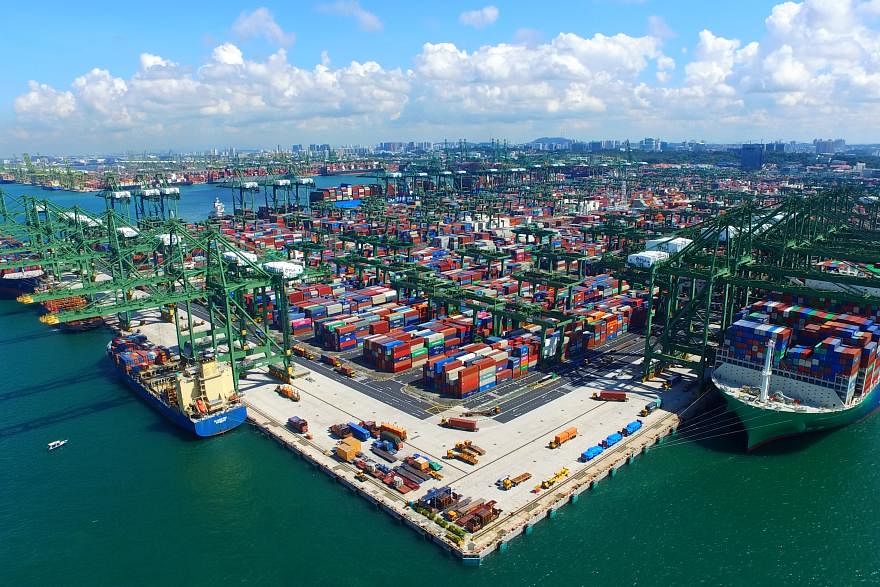SINGAPORE is open to reviewing the idea of a one-off increase in its vehicle population, spread over a few years and accompanied by higher vehicle-usage charges to prevent congestion, said Transport Minister Chee Hong Tat on Tuesday (Mar 5).
But the trade-offs “are not straightforward, and need to be studied carefully before a decision is made”, he added during the debate in Parliament on his ministry’s budget.
Member of Parliament Saktiandi Supaat (Bishan-Toa Payoh GRC) had asked if distance-based charging could allow Singapore to increase the total vehicle population while still achieving its car-lite vision.
Chee said his ministry was “open to reviewing the idea” of a one-off increase with higher charges.
These usage-based charges could include location and time-based fees – as with the existing Electronic Road Pricing (ERP) system – or distance-based charging, where road users pay depending on how far they travel.
“However, it is not feasible to (rely only) on usage-based charges to prevent traffic congestion, as these would have to be set at very high rates, which might not be acceptable to many car owners,” he said.
Singapore would still need other ownership controls and measures, such as parking charges, Chee added.
He also noted that taxi, private-hire car and delivery drivers would face higher usage-based fees as they travel longer distances. “We will need to examine the impact on these groups, though usage-based charging is, in principle, a fair approach,” he said.
The Land Transport Authority began the roll-out of the new ERP 2.0 system’s on-board units last November.
These units are equipped with satellite-based technology that can support distance-based charging, though the statutory board said at the time that there were “no immediate plans” to transition away from the current system.
Boosting competitiveness
Walter Theseira, associate professor of economics at the Singapore University of Social Sciences, said the type of vehicles involved and the timing of the addition would be important questions to answer.
An addition to the passenger car population now, when the Certificate of Entitlement (COE) quota is increasing from a trough, would be less impactful, he said, noting that other vehicle types could benefit more from the move.
“For commercial vehicles and motorcycles, I think the role these fleets play in the economy and society have to be looked at,” he said. “Given, for example, the increase in e-commerce and deliveries in recent years, is there a case for fleet expansion here?”
Prof Theseira added that the move would have to be carefully managed to avoid worsening traffic congestion here.
“It’s really about the trade-off between the benefits of vehicle access for the economy and society versus the inevitable congestion and liveability cost,” he said.
Glenn Tan, president of the Motor Traders Association of Singapore, said a potential move to add to the vehicle population would be a positive one, but in the long term, it is more important for the government to balance out COE price swings.
These swings, which result from the COE supply imbalance that happens on a 10-year cycle, are not good for businesses or consumers, he said. They also affect the car industry, which has to deal with a boom-and-bust sales cycle.
“I think consumers are fine with a S$10,000 variation over the years, but not to S$150,000 – that’s beyond ridiculous,” he said, referring to COE prices hitting all-time highs in 2023.
Stabilising the COE quota supply – and the resulting prices – would help maintain some semblance of sanity for the system, he added.
Say Kwee Neng, a car industry consultant and former managing director at a car dealership group, said the move would be a step in the right direction, as controlling usage to prevent congestion is more beneficial than simply discouraging car ownership with high prices.
“I think being car-lite is not about sheer population numbers, but it’s really where the cars are in use and when, and trying to shape that behaviour,” he said.
He added that with high car prices, it is clear that the current ERP system is not deterring drivers from using cars during peak hours.
Say also said that it is not merely about penalties, but truly shaping driver behaviour. With distance-based charging, the government could introduce more nuanced systems.
“If we have distance-based charging, you could have incentives for drivers who log only a certain distance a year, or are driving mostly in less crowded areas,” he said.
High vehicle prices hurt Singapore’s competitiveness in attracting talent and also inflate vehicle fleet costs, he added. Moving away from a high cost of ownership would free the Republic to benchmark car prices, in order to remain a globally competitive economy.
“You need to let people choose, and not just think the application of high costs are the only panacea for whatever problem we may face in Singapore,” he said.
“It’s killing our competitiveness and hurting us financially.”







